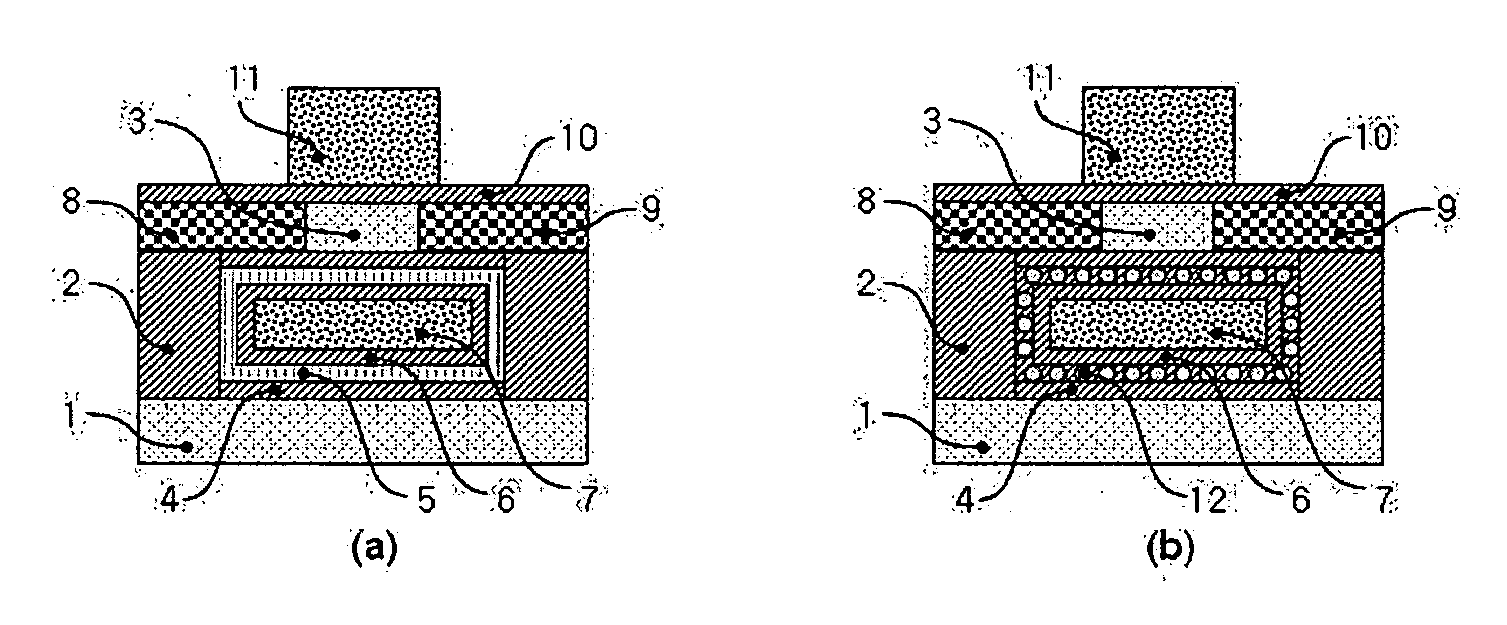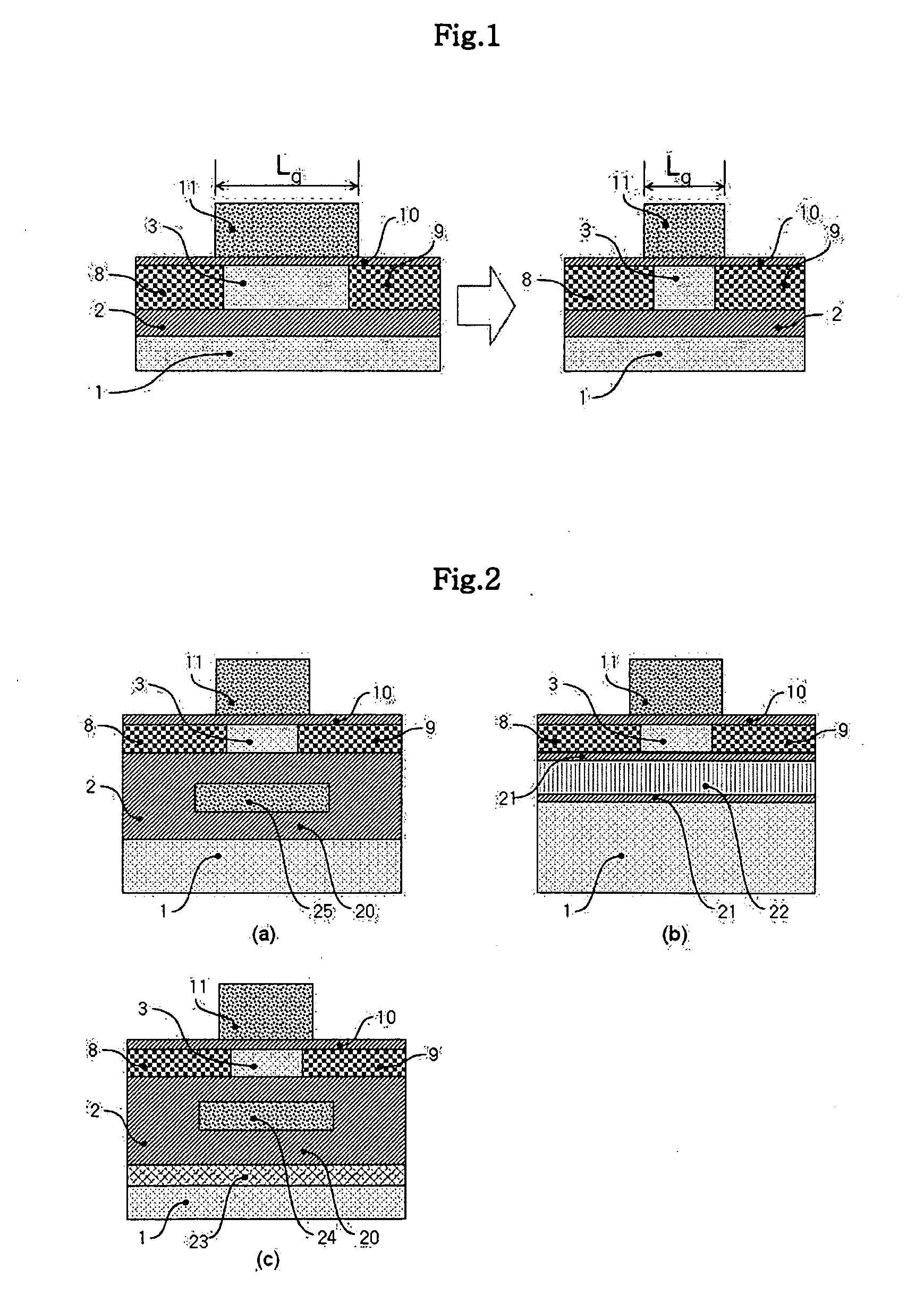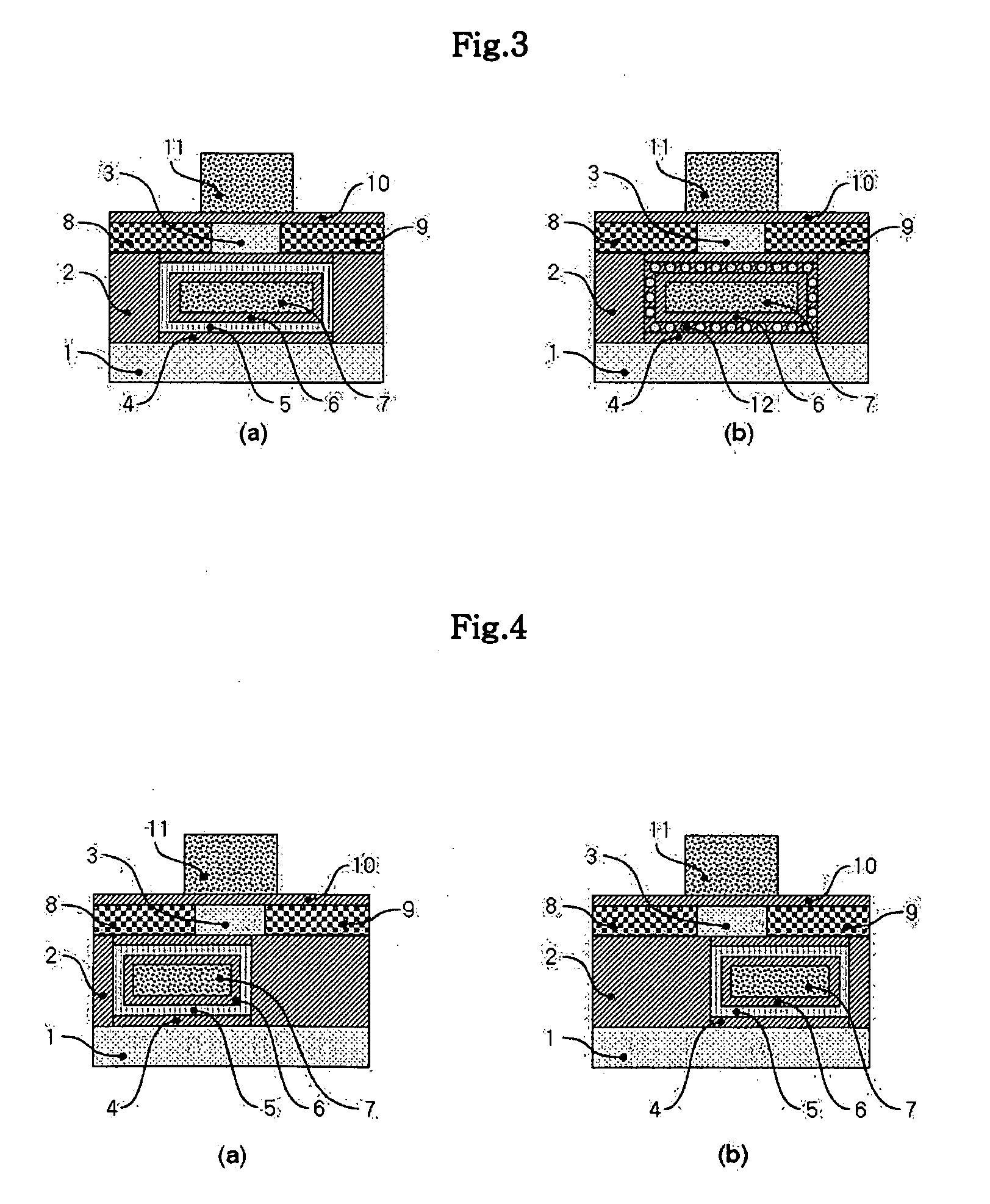High performance one-transistor dram cell device and manufacturing method thereof
a dram cell, one-transistor technology, applied in semiconductor devices, digital storage, instruments, etc., can solve the problems of short channel effect, difficult to sense and store information for a long time, and difficult manufacturing process for miniaturizing the cell device and the cell capacitor in the mos device, so as to reduce the dispersion of threshold voltages, improve the degree of integration of the cell array, and good miniaturization characteristics of the cell devi
- Summary
- Abstract
- Description
- Claims
- Application Information
AI Technical Summary
Benefits of technology
Problems solved by technology
Method used
Image
Examples
Embodiment Construction
[0039]Hereinafter, exemplary embodiments of the present invention will be described with reference to the accompanying drawings. The embodiments are provided to the skilled person in the related art for the better understanding of principles of the present invention. Therefore, the present invention is not limited to the embodiments, but various modifications can be implemented. In the description of the present invention, an NMOS device cell is assumed if there is no specific mention. All the description and principles can be adapted to a PMOS cell.
[0040]One-Transistor DRAM Cell Device
[0041]A structure of a one-transistor DRAM cell device according to a first embodiment of the present invention will be described with reference to FIG. 3. FIG. 3 (a) is a cross-sectional view showing the structure of the one-transistor DRAM cell device according to the first embodiment. In the structure, a source 8, a drain 9, and a floating body 3 are formed in a silicon film, and a gate electrode 1...
PUM
 Login to View More
Login to View More Abstract
Description
Claims
Application Information
 Login to View More
Login to View More - R&D
- Intellectual Property
- Life Sciences
- Materials
- Tech Scout
- Unparalleled Data Quality
- Higher Quality Content
- 60% Fewer Hallucinations
Browse by: Latest US Patents, China's latest patents, Technical Efficacy Thesaurus, Application Domain, Technology Topic, Popular Technical Reports.
© 2025 PatSnap. All rights reserved.Legal|Privacy policy|Modern Slavery Act Transparency Statement|Sitemap|About US| Contact US: help@patsnap.com



